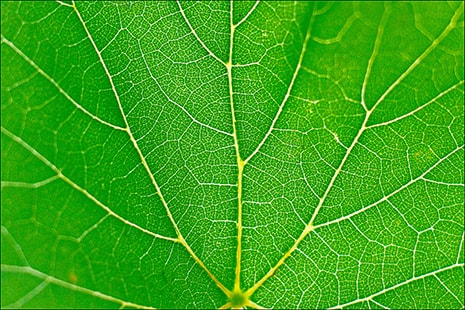Graduate students at the Worchester Polytechnic Institute implement dehydrated spinach leaves to form working veins and repair damaged organs
Orange County, CA - May 15th 2017 - Graduate students at the Worchester Polytechnic Institute (WPI) in Massachusetts have developed a way to implement dehydrated spinach leaves to form working veins of a human heart and repair damaged organs.
Previously 3D printing was used to propagate large organs, however small delicate veins and blood vessels proved difficult to replicate due to their fragile nature. These smaller vessels are essential in achieving a healthy heart and correct functionality.
The essential trait in a leaf is the venation, a branching network of thin veins that delivers water and nutrients to surrounding cells. The network is most similar to the human heart which moves blood through means of human tissue.
“We take spinach leaves and we profuse them with a detergent that removes all the cellular material from the spinach leaf. What we’re left with is the structure that keeps those cells in place, and then we can seed human cells on that structure,” says Glenn Gaudette, a professor of Biomedical Engineering at WPI and a co-author of the study, published in the journal Biomaterials. The leaf structure left behind is made of cellulose- a biocompatible frame that has been used in a wide variety of regenerative medicine applications to date.

For the human cells to permeate the cellulose structure, scientists bathed the leaf remains with living human corpuscle to stimulate growth and eventual scaffolding around leaf veins. Upon the leaf’s transformation and the full development of the scaffold, scientists then issued fluids and microbeads through the veins to test the flow of blood cells through the nexus.
The goal of the study is to replace damaged tissue of heart attack patients whose hearts can no longer contract naturally. Like the replaced blood vessels, the enhanced spinach leaf veins would deliver oxygen throughout the entire patch of modified tissue fostering new heart matter.The team is hopeful that their research will lead to further development of bodily tissues. An example of such a feat, noted in their journal publication, researchers wish to expand their study through the adoption of wood cells to potentially patch and repair human bones.
“We have a lot more work to do, but so far this is very promising,” says Professor Gaudette. “Adapting abundant plants that farmers have been cultivating for thousands of years for use in tissue engineering could solve a host of problems limiting the field.”
Contact Ampronix:

Email: info@ampronix.com
International Sales: +1 949-273-8000
Domestic Sales: 1800-400-7972 for US and Canada
Follow Us:
Share This Article:
View our Product Catalog Online Here
About Ampronix
Ampronix is a renowned authorized master distributor of the medical industry's top brands as well as a world-class manufacturer of innovative technology. Since 1982, Ampronix has been dedicated to meeting the growing needs of the medical community with its extensive product knowledge, outstanding service, and state-of-the-art repair facility. Ampronix prides itself on its ability to offer tailored, one-stop solutions at a faster and more cost-effective rate than other manufacturers.
Ampronix is an ISO & ANSI/ESD certified facility. To learn more go here.
Graduate students at the Worchester Polytechnic Institute implement dehydrated spinach leaves to form working veins and repair damaged organs Orange County, CA – May 15th 2017 – Graduate students at the Worchester Polytechnic Institute (WPI) in Massachusetts have developed a way to implement dehydrated spinach leaves to form working veins of a human heart and repair […]



